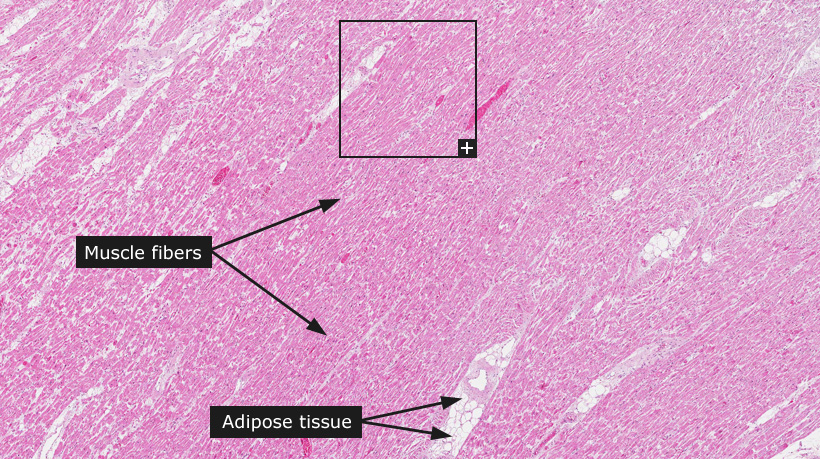DictionaryHeart muscleHeart muscle
Heart muscleThe human heart is in essence a coordinated muscle that pumps 6,000 liters of blood through the body daily during a lifetime. The heart muscle is innervated with nerve fibers that control the pace of heart rate. The cardiac muscle (myocardium) and skeletal muscles are both composed of striated muscle tissue that form parallel muscle fibers. However, contrary to skeletal muscle, cardiac muscle fibers may be branched instead of organized as parallel linear fibers. Striated muscle of heart consists of cardiomyocytes arranged in fibers that shows cross-striations formed by alternating segments of thick and thin protein filaments. Cardiomyocytes usually contain one or two nuclei. The cells are rich in mitochondria and to a large extent contain actin and myosin proteins arranged in a repeating unit called a sarcomere. Histologically, this highly structured arrangement of sarcomeres appears as dark (A-bands) and light (I-bands) bands, which are clearly visible in the microscopic image. In addition to the muscle fibers, the myocardium also includes streaks of connective and cuffs of adipose tissue surrounding the smaller vessels. The cardiac muscle tissue is highly vascularized by coronary arteries that branch into smaller vessels that end in a dense network of capillaries running in between the fibers. |